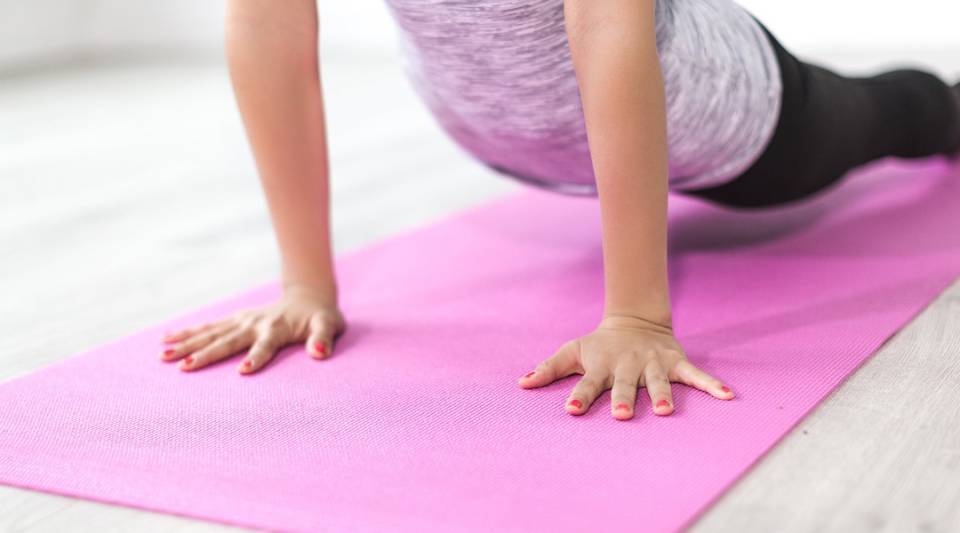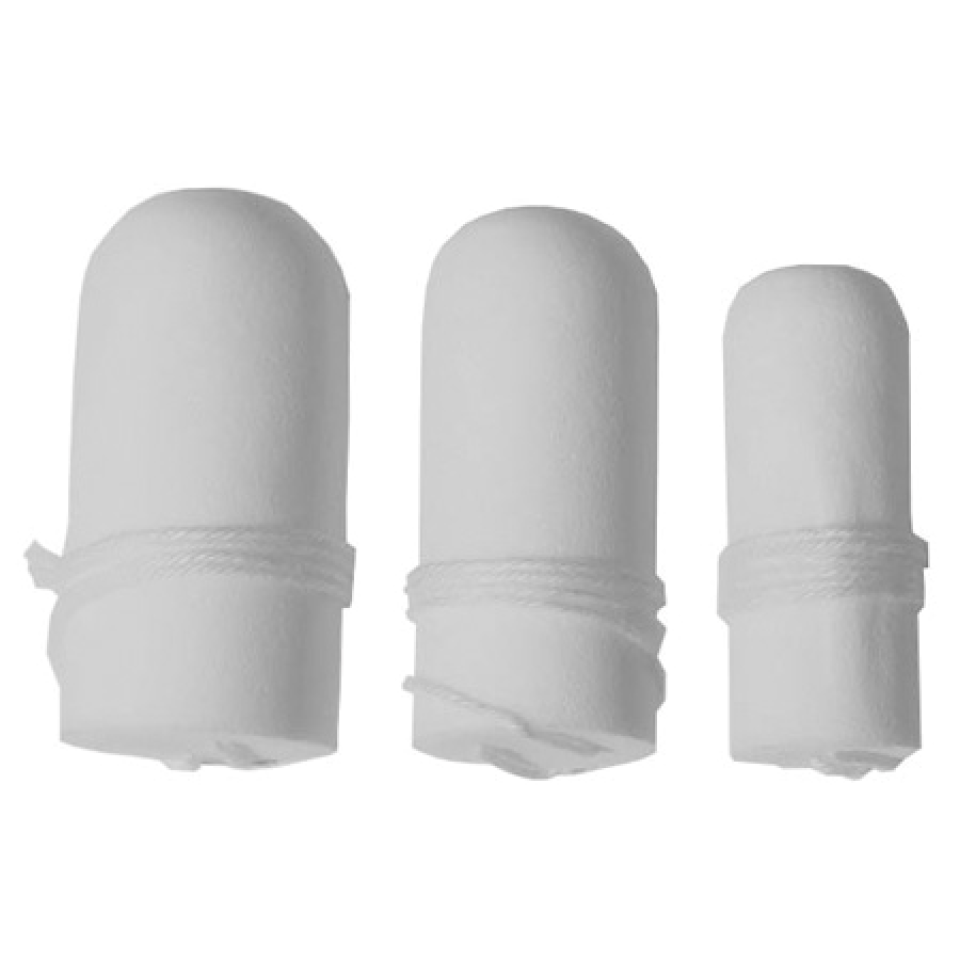18 January 2022
Urinary Incontinence Treatment
Some women who experience urinary incontinence sometimes disregard it because it only happens very occasionally, in very small quantities or it doesn’t interfere with their well-being, and so they don’t need to visit a doctor or receive any treatment. Contrastingly, in other women, urinary incontinence is detrimental and they need to be aware of the treatment options available for each type of incontinence.
A high percentage of women with urinary incontinence who receive personalised treatment indicated by specialists manage to cure or significantly improve their symptoms.
There are several treatments for urinary incontinence. Treatment selection, which may involve a single therapy or a combination, is based on each patient’s characteristics, type of symptoms and the severity of their incontinence.
Conservative treatment includes a set of measures that do not involve surgery or taking medication. It is recommended for all women with urinary incontinence, regardless of the type they have, as these measures are beneficial for both types.

Lose weight. In overweight or obese women, it has been proven that a 5–10% weight decrease can reduce the weekly episodes of urinary incontinence by up to 50%. Individuals are therefore advised to lose weight through their diets and by exercising.

Improve bowel transit. Reduce the effort required to defecate by following diet guidelines to improve chronic constipation; this will help avoid weakening the pelvic floor muscles.

Quit smoking. Will decrease the chronic cough and the impact on the pelvic floor muscles, and so you will experience fewer episodes of urinary incontinence. Furthermore, tobacco is a bladder stimulant, so quitting will also improve symptoms of urinary urgency.

Reduce intake or stop consuming bladder stimulants. Coffee, tea, alcoholic, fizzy, artificially sweetened and energy drinks, etc., all produce bladder spasms. Reducing consumption benefits women with symptoms of urinary urgency and an increased frequency.

Control fluid intake. You should consume around 1.5 litres of fluids per day. It is important to remember that a balanced diet already provides a portion of your required fluid intake. Individuals with urge or nocturnal incontinence should therefore try not to drink any liquids after mid-afternoon.

Moderate physical strain. It is important to engage in daily physical exercise. However, women with stress urinary incontinence or significant muscle weakness should avoid physical efforts that pose a risk to the pelvic floor muscles, such as high-impact activities (jumping, running). Recommended exercises include walking, swimming, and any activity that helps improve overall fitness without increasing abdominal pressure.
As a precautionary measure, you should always try to contract the pelvic floor muscles whenever practising physical exercise in order to counteract abdominal pressure and prevent possible episodes of urinary incontinence.

Pelvic floor muscle training programme. The purpose of these exercises is to strengthen the muscles surrounding the vaginal and anal areas. With proper muscle strength, urethral support increases during contraction, improving control over urine leakage (both stress-related, like when coughing, and urgency-related, to help reach the toilet without leaking). Pelvic floor exercises are not recommended without prior guidance from professionals, as they may be performed incorrectly.
To train patients, biofeedback techniques are sometimes used to identify whether the exercises are being done correctly; or electrostimulation, which activates the muscles with a small electrical pulse while the contractions are performed.

Devices. There are devices such as pessaries or tampon-like supports that alleviate stress urinary incontinence. They are inserted into the vagina to help support the urethra, although symptoms return when they are removed. They are very useful for women with stress urinary incontinence who have a cold or are playing sport.
Before starting the training programme, the therapist will perform a digital vaginal examination (by introducing a finger inside the vagina) to assess the pelvic floor muscles’ tone and ability to contract. They will then design a personalised exercise program.
How do you do the exercises?
They are best performed by closing the anal opening, as if you were trying to stop gases from escaping, and at the same time close the vaginal opening, as if you were trying to interrupt urination (a stream of urine).
You can use a mirror while doing the exercises to check whether the vaginal opening is closed and the anus lifts. Inserting a finger inside the vagina may also help perceive the strength of muscle contraction.
It is important to breathe normally while performing the exercises and to avoid involuntary contraction of the abdominal muscles, the buttocks and muscles on the inside of your thighs and legs.
What is the ideal position for these exercises?
You can perform the exercises in different positions (sat down, stood up, in the foetal position, etc.).
How often should I perform the exercises?
Recommendations are to complete the training programme every day for a minimum of 3 months. Patients then move on to the maintenance programme, which is a minimum of 3–4 sessions per week.
The best advice however is to integrate, insofar as possible, the programme into your daily lifestyle.
Pharmacological treatment is useful for women diagnosed with overactive bladder, with or without associated urgency urinary incontinence. Currently, several medications are available that reduce involuntary bladder spasms and relax the muscle responsible for contraction. However, some of these medications are contraindicated in patients with glaucoma, pyloric stenosis, severe bronchospasm, reflux esophagitis, intestinal ileus, and severe ulcerative colitis, as well as in those with uncontrolled high blood pressure. After starting pharmacological treatment, a follow-up visit is recommended around four weeks later to assess the treatment’s effectiveness. If there is an improvement in symptoms (such as fewer urgency episodes and leaks), the medication is continued long-term; if not, or if the improvement is minimal, the dose may be adjusted or a different drug from another group may be tried.
The symptoms of urgency urinary incontinence do not always improve with drug therapies. In these cases the possibility of administering second-line treatments in specialised units is evaluated. These include:

Botulinum toxin. Is a substance produced by a bacterium that causes muscle paralysis and is widely used in medicine. It is indicated for women with urgency urinary incontinence who have detrusor contractions (the muscle that contracts the bladder) during bladder filling, as detected in urodynamic studies.

Sacral neuromodulation. This is a device placed in the lower back that uses a system similar to a pacemaker to regulate the nerves that control the bladder.
Botulinum toxin is a neurotoxin that paralyzes the muscle that contracts the bladder and reduces the sensitivity of nerve fibers. The only botulinum toxin approved for use in women with overactive bladder is OnabotulinumtoxinA (Botox®), which is injected into the bladder using a cystoscopy (a thin video camera inserted through the urethra).
This toxin does not have a long-lasting effect, as its average duration is about 6–9 months. After this time, symptoms may return, but reinjection is effective in most cases.
The most common side effect is difficulty fully emptying the bladder (due to detrusor muscle paralysis), which may require the use of a catheter to prevent urinary tract infections.
Stress incontinence
This type of treatment is indicated in women with moderate or severe stress urinary incontinence who do not wish to follow conservative treatment or for whom it has proven ineffective.
The choice of surgical technique to correct the symptoms of stress incontinence is currently based on each patient’s characteristics and the experience of the surgical team that will perform the operation.

Tension-free suburethral sling is the most commonly used technique and consists of placing a tape that passes under the urethra to provide greater support during physical efforts. The tape bends the urethra when straining, like folding a running hose, thus preventing urine leakage (only those associated with physical effort).
Complications are minimal and include difficulty urinating, persistence of symptoms, or the tape not being properly covered by the vaginal mucosa.
The surgery is short and recovery is quick, so in most cases hospital admission is not required. It is recommended to avoid physical strain for 1 month to ensure proper integration of the mesh into the tissues beneath the urethra.
There are other less complex techniques that can be used, such as the injection of a gel into the urethra to coapt it (urethral bulking agents), or other techniques that do not involve prosthetic material.
The decision will be agreed upon between the patient and the specialized professional, taking into account the characteristics of the patient and the type of urinary incontinence she has.
The technique has minimal complications and recovery is quick; the majority of cases do not require an overnight hospital stay.
There are other simpler techniques that can be used when individuals do not respond to the standard technique or when the specialist considers another method more appropriate given the patient’s characteristics.
The gynaecologist, Montserrat Espuña, explains that the treatment of stress urinary incontinence is mainly physiotherapy, but when this does not work, surgery must be resorted to.
Mixed incontinence
The treatment of these cases is complex and requires a very high degree of personalisation as well as a very complete study.
The specialist will evaluate the characteristics of each individual and the severity of their symptoms. This assessment is used to decide whether to treat the symptoms of the urge or stress type incontinence first. Alternatively, sometimes both sets of symptoms are treated from the beginning.
This is a simple, painless technique that uses some sensors to register the activity of muscles located inside the vagina and the abdominal region. While performing pelvic floor muscle exercises, the sensors provide a series of visual and/or audio signals that tell us whether you are doing the contraction and relaxation the exercises correctly. The test also checks whether other muscle groups are stopping the pelvic floor muscles from contracting efficiently.
All of this information helps us understand how the muscles are performing when they contract and hence we can modify any exercises performed incorrectly.
Can I do the exercises at home?
After checking that you are completing the exercises correctly, the therapist designs a specific training programme adapted to each patient’s needs and which can be performed at home.
As this allows you to do the exercises in a more relaxed environment it increases your motivation and adherence to the programme. As such you will achieve the same results but with greater independence and fewer visits to the healthcare centre.
There are various devices available to help tone the pelvic floor muscles, which can be used at home:

Vaginal cones. Cone-shaped weights that are placed inside the vagina to tone the pelvic floor muscles. There are five cones of the same size but with different weights, ranging from 20 to 100 g.

Vaginal spheres. These are spherical devices with a weight in the centre; they are also placed inside the vagina to tone the pelvic floor muscles. They are available as a single sphere or a pair.
How should I use the vaginal cones and spheres?
Depending on the vagina’s capacity and tone of the pelvic floor muscles, the therapist will indicate the weight of the cone or sphere to be used, as well as the duration and frequency of training. As your muscle tone increases, the weight of the vaginal cone or the number of spheres shall be increased.
In order for these devices to work effectively, they should always be used while standing, walking or practising physical activities.
They should not be used in cases of:
- Pelvic organ prolapse
- Vaginal infections
- During menstruation
- Less than 2 hours after sexual intercourse
There are vaginal devices that compress the urethra from within the vagina, increasing support while in use, and are useful for temporarily relieving symptoms of stress urinary incontinence. These devices include the vaginal tampon and the incontinence pessary.

Tampons. It is a vaginal tampon that is inserted into the vagina to support the urethra and prevent urine leakage, without interfering with normal urination. They come in various sizes to better adapt to each woman’s vaginal capacity. They are hygienic, comfortable to wear, and reusable if properly cared for.

Incontinence pessary. These devices, available in different materials, shapes and sizes, are placed at the back of the vagina in order to maintain any fallen or prolapsed organs in their correct positions. Some of these devices are specifically designed for the treatment of urinary incontinence, with additional suburethral support. Your doctor or nurse will explain the hygiene measures, as well as how to insert and remove the pessary, so that you can gain maximum independence.
The pessary or vaginal tampon is indicated for women with stress urinary incontinence who cannot undergo surgery (due to contraindications, personal timing, while on a surgical waiting list, those who do not wish to have surgery, or those with occasional symptoms such as during exercise or colds).
They should not be used in cases of vaginal lesions or infections, during menstruation, or in the presence of pelvic inflammatory conditions.
Indications for incontinence pessaries
- Women with urinary incontinence who cannot undergo surgery (surgery is contraindicated, inappropriate timing for the individual, long waiting lists, etc.)
- Women with urinary incontinence who do not wish to undergo surgery
They should not be used in cases of:
- Vaginal lesions and infections
- Pelvic inflammatory processes
- In women with particularly weak muscles
Genital atrophy is a condition mainly caused by the decrease in female sex hormones (estrogens) during menopause. It involves the thinning of the walls of the vagina and vulva, along with a reduction in vaginal lubrication, leading to symptoms such as vaginal dryness, genital irritation, and/or discomfort during sexual intercourse.
Genital atrophy can worsen symptoms of overactive bladder, with or without urgency urinary incontinence, due to the presence of estrogen receptors also in the urethra and bladder. To improve this situation, it is recommended to apply local treatment (to the vulva and vagina) with estrogens in the form of creams, suppositories, or vaginal tablets. It is recommended to use them 2–3 nights per week.
Hence postmenopausal women with urge incontinence are indicated the appropriate vaginal oestrogens in function of their drug therapy, as long as there are no contraindications (e.g., women with a history of breast cancer, etc.), in which case vaginal moisturisers may be indicated.
Substantiated information by:



Published: 20 February 2018
Updated: 17 July 2025
Subscribe
Receive the latest updates related to this content.
(*) Mandatory fields
Thank you for subscribing!
If this is the first time you subscribe you will receive a confirmation email, check your inbox

